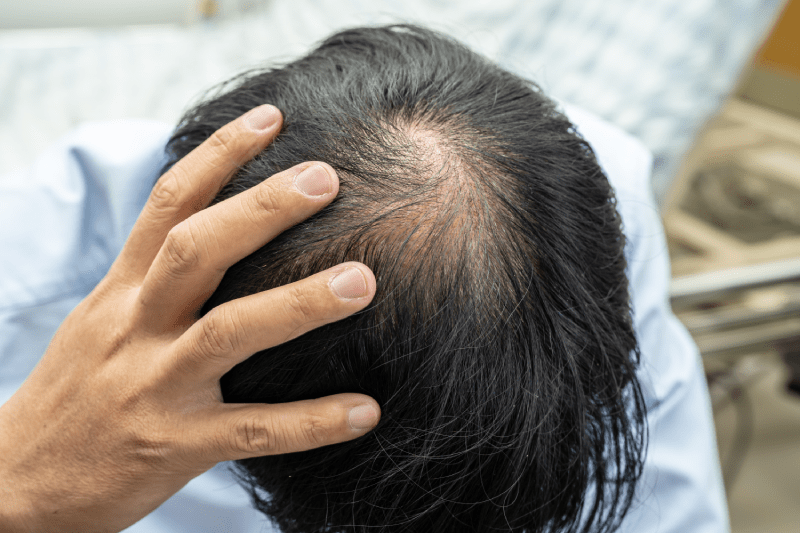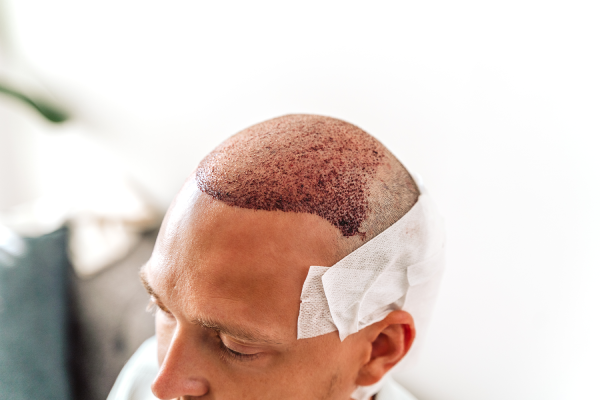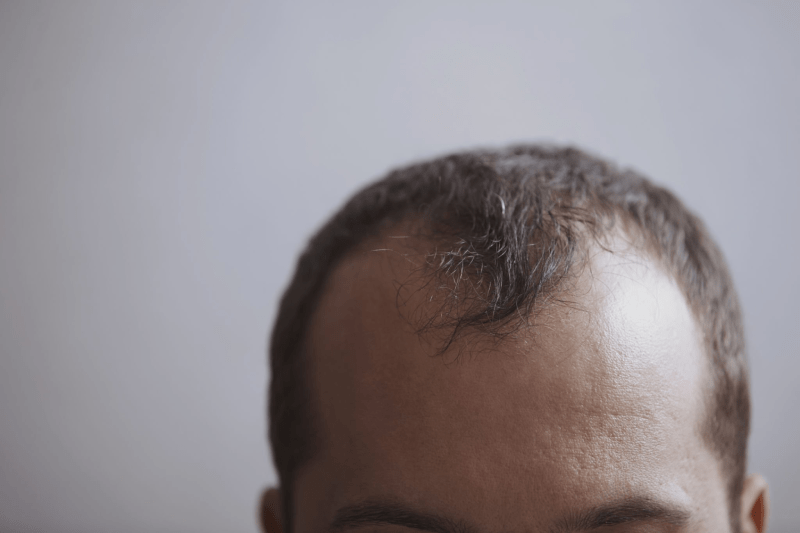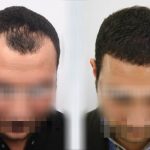Hair Transplant in Turkey- FAQS
Am I a good candidate for hair transplantation surgery?
Surgery for hair restoration can considerably enhance beauty and general well-being for the proper applicant. Not everyone, however, qualifies for the surgery. Before having a hair transplant treatment, those who are must have reasonable expectations.
Keep in mind that each person has a limited supply of donor hair that can be transplanted to the scalp’s thinning patches. The procedure’s results might not live up to your expectations if that hair is not used effectively.
Additionally, you should only consider surgery as a last option after doing everything else to halt the loss of hair.
You are mistaken if you believe that a viable solution to your hair loss problem is to undergo minor operations to “keep up with your hair loss.” Patients who have thick hair on their scalps incur the danger of losing a considerable percentage of their hair as a result of the trauma of the surgery.
In some cases this lost hair will not return and you could be left with thinner hair than before the procedure. This is just one reason why understanding whether or not you are a good candidate for the procedure is so important.
The best candidates for hair restoration surgery are:
- Men who have advanced to class 3 or above on the Norwood Scale or who have experienced hair loss owing to male pattern baldness for more than five years.
- Men who recognize their hair loss may continue to advance after surgery and who have realistic expectations, even if they are taking prescription medication to halt this development. To save as much of their hair as possible following surgery, some men must continue taking these drugs.
- Men who have been losing hair for a long time, whose pattern has stabilized, and who want to grow some more to look younger.
- Both men and women who experience burns or trauma-related hair loss.
- Men and women who have lost hair due to other cosmetic procedures such as facelifts.
Which methods are used for hair transplantation?
Hair Transplant Types
Follicular Unit Transplantation (FUT)
In the FUT method, the hair follicles are removed from the donor area as strips, and the grafts in these strips are separated and transplanted into the channels opened in the recipient area.
- An average of 15-30 cm in length and 1-1.5 cm in width, a rectangular piece of skin is cut from the nape and lateral parts of the head, which is anesthetized with local anesthesia. The amount of strip to be removed depends on the amount of hair follicles to be collected.
- After the harvesting process is completed, the area where the incision is made is closed with an aesthetic suture and wrapped with a bandage.
- The hair follicles (grafts) in the strips taken by cutting are separated from the skin pieces and kept in the solution.
- After the area to be planted is anesthetized with local anesthesia, needle-head-sized channels are opened as much as the number of grafts extracted with very small micro blades or fine needles.
- Hair follicles are placed in the channels and the process is completed.

(Follicular Unit Extraction) FUE
In the FUE method, the hair is collected one by one from the donor area and transplanted into the channels opened in the recipient area.
- Usually the entire head is shaved.
- A special pen-like piercing tool called a punch is used under local anesthesia to directly extract the hair grafts one by one. In the classical FUE method, the punch is used manually and the grafts are collected with tweezers.
- Grafts are placed in small channels opened on the scalp with the lateral slit technique. The lateral slit technique is the process of guiding the channels according to the size and shape of the graft.
DHI hair transplant
This technique is also known as ductless planting technique. For this, a sharp-edged tool, which looks like a pen and is known as the Choi needle, is used. The hair follicles collected from the donor area are placed in the chamber inside the device and transplanted directly into the area where the hair will be transplanted, with special tips without drilling any holes. Thus, the time that the grafts are outside is minimized and they remain stronger.
How long does a hair transplant procedure take?
This has varying responses from patient to patient. Hair transplantation treatments and the duration of how many grafts the patients need will change accordingly. On average, the hair transplant process will take 4 to 8 hours. This is the average time frame, although in some cases this varies.
How is the procedure performed?
During a hair transplant, little punch grafts from the scalp are removed, or a bigger piece of the scalp is removed from a donor area and divided into smaller pieces for use as grafts. Then, these grafts are moved to a scalp region that is bald or losing hair. The size and shape of the grafts produced in this way vary.
What is the recovery/healing time after the treatment?
The majority of hair transplant surgeries are outpatient procedures, so you can return home the same day as the treatment. The type of transplant you receive will determine how quickly you recover. You might be able to in the days following surgery to:
- Day 1: Remove bandages.
- Day 2: Wash your hair.
- Days 3 to 5: Return to work and start light activities.
- After 10 days: Remove stitches (done by your healthcare provider).
- After 3 weeks: Return to exercise or sports.
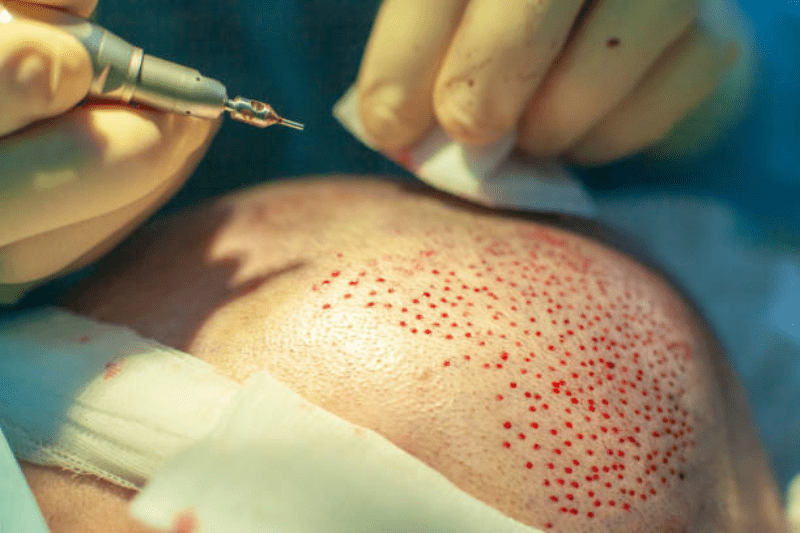
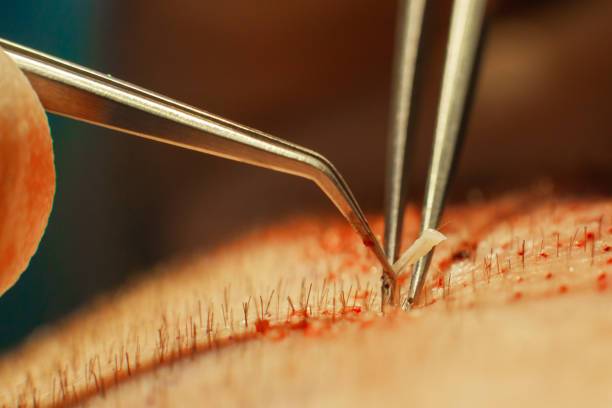
From which area are hair taken for the hair transplantation?
In hair transplant treatments, the donor area is often the nape. The hair on the nape is strong and does not tend to fall out. For this reason, the preferred donor area for transplantation is the nape. In some cases, if there is not enough donor area, grafts can be collected from other areas of the body, but the main area is the nape and the area behind the head.
Can there be hair loss after a transplant?
Yes. Following a hair transplant, temporary hair loss is typical. This is a transient side effect of hair restoration therapy that is actually quite hilarious. Two to eight weeks following surgery, transplanted hair will typically start to come out as a result of shock. By the third month after a transplant, the hair typically seems thinner. The grafted follicles start to grow hair normally once the shock wears off. Your hair will appear thicker and healthier as the transplanted hair grows.
What are the important factors for hair transplantation?
- A excellent doctor to choose: Finding a qualified and experienced doctor is the most crucial step in any medical process. In the field of hair transplants, the same is true. The success of a hair transplant depends heavily on the competence and experience of the doctor. By doing more procedures, caring for more patients, and accumulating more professional experience, a doctor improves his skills at addressing a variety of reasons and at forecasting the outcome.
- Choosing the appropriate method: Finding the appropriate hair transplant method for your type of hair loss is another crucial element in a successful transplant. To decide, speak with a medical professional who specializes in hair transplants. In general, FUE and other extraction methods have shown to be effective for the majority of patients. Experts even created sapphire FUE, an upgraded form of FUE that produces more accurate results. However, some people may benefit from other treatments like FUT/Strip and non-surgical DHI approaches.
- Understanding the underlying cause of hair loss: Making appropriate plans are two major success factors. It’s crucial to anticipate future hair loss, and all regions that require transplanting must be taken care of. Since it provides you a natural appearance and the same form throughout your life, preparing your natural hairline is crucial. Avoid drawing in a straight line since it makes the hair look unnatural.
- Balance: Check to see if the donor and recipient areas are evenly distributed. The donor area needs to be sufficiently dense to guard against future bald spots in the donor area.
- Graft extraction: Whether doing a FUE or FUT treatment, surgeons must take care to avoid damaging the graft in any way. The precise placement of the graft in each follicular unit is also essential for optimal results.

What is the success Rates of hair transplantation?
Clinical studies have shown that 85-95 percent of all implanted grafts flourish where they are placed. This high success rate of hair transplants is proof that they are frequently highly effective. Some patients worry that their grafts might reject, as with prior transplants.
What kind of process awaits me after the operation?
It can be a long, thrilling, and difficult process to wait for your hair to regrow. Do not be discouraged if you do not initially notice any growth because most patients do not have any new growth in the first two to three months.
Given that just millimeter-sized incisions are required, recovery from a FUE hair transplant happens rather quickly. You can feel swollen or uncomfortable for the first three days, but these symptoms will soon start to go away. You will first have thin hairs that have been carefully positioned in the recipient area.
You will have some scabs where the grafts were inserted and redness where we performed. In the five to ten days following surgery, these overt traces of surgery will begin to disappear. Whilst in the recovery phase, some hairs may fall out but do not be alarmed, this is a normal part of the process. After 3-4 months, most patients will start to see a difference in hair growth.
There are a number of things to think about, particularly before going back to work, with the development of your newly implanted hair grafts and the healing of the donor site. Following the treatment, patients must follow the aftercare and recuperation instructions provided by their surgeon. Our surgeons are always accessible at our clinic for a follow-up appointment to address any further questions you may have as your new hair begins to grow.
Does the procedure hurt?
No, a hair transplant is not painful thanks to local anaesthetic and post-operative pain relievers. A hair transplant is often a pleasant and straightforward experience for the majority of people who are experiencing hair loss, even though no procedure can be fully painless and some brief and probably transitory level of discomfort is conceivable.
Are there any complications from surgery?
Hair transplantation treatments often give very successful results if performed in a good clinic and no complications are observed. However, in some cases, it is possible for patients to experience some complications. In such cases, the following may occur;
- possible infections
- Growth of pus in crustal areas in the area where surgery is performed,
- Inflammation of the hair follicles pain in the hair follicles and scalp, Reddened swelling and itching,
- Bleeding and loss of sensation in the scalp
How long will it take to see the results of my transplant?
Due to the shock from the procedure, the transplanted hair follicles will lose some hair; this is totally normal and is a part of the anticipated recovery process. After that, the follicles go into a “resting” phase that typically lasts three months. The hair follicles should start progressively producing hair once the rest is over. It’s crucial to remember that each follicle has a unique development cycle and velocity, which can cause hair length to first appear unnatural and uneven. Generally speaking, an initial progress review could be done after five or six months if there has been sufficient overall growth.
